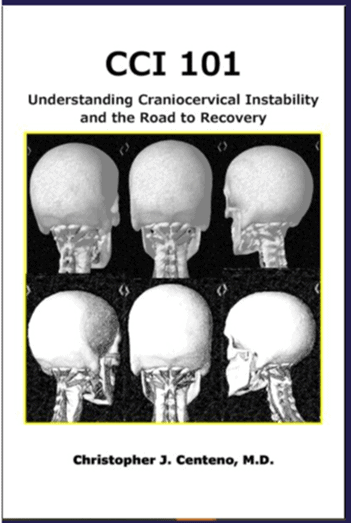Understanding Functional Levels in CCI
Our Colorado HQ has become a worldwide treatment site to help Craniocervical Instability patients avoid invasive fusion surgery. In decades of treating these patients, I’ve noticed that patients with this condition have very different levels. To ensure that everyone’s on the same page in understanding which type of patient is being treated, I’ve developed my own functional scale. Let’s dive in.

What Is CCI?
CCI means Craniocervical Instability. That’s a condition where the ligaments that hold the head on the spine are damaged. Our clinic in Colorado developed a procedure (PICL) to help these patients without surgery by directly injecting these ligaments using a very novel technique. To learn more, consider downloading my new book on this topic:
The Varying Functional Levels of CCI
In treating these patients, they have very different levels of function. This can be everything from someone who needs to spend 23 hours a day in bed and is only upright an hour to someone who can be upright, but only with a neck collar, to someone who can exercise but avoids certain activities that make symptoms worse. These functional levels are critical for good non-surgical and surgical decision-making. For example, for someone who is very disabled, more invasive treatments might make good sense. However, for someone who is barely disabled, more invasive treatment may make little sense. In addition, someone starting at a low functional level when treatment is begun has a much longer journey to get to anywhere near normal than someone beginning at a higher level.
The “Centeno” CCI Functional Scale

I created the above functional scale to fill this gap:
Highest CCI Functional Level – These are patients like a man I treated from Texas who when we began treatment, was able to walk 10,000 plus steps a day. He was still working full time and avoided certain activities because they made his headache symptoms worse.
Mid-range CCI Functional Level – I have treated many Moms with EDS and CCI in this category who are able to hold a job and care for kids, but they are otherwise functionally limited. Hence, keeping up with their daily routine comes at a great cost of keeping symptoms revved up. They can’t exercise and they avoid specific activities they know that will make them worse.
Low CCI Functional Level – This is where many of my CCI patients begin. They can spend a good part of the day upright but are severely limited. Even physical therapy exercises flare them up. They are generally unable to work or are severely limited in that area. To manage to be upright and participate in life, they need to lay down several times a day to rest.
Lowest CCI Functional Level – I’ve had a few patients who have started here. One was a chiropractor from Canada who needed to spend 23 hours a day lying down and was only able to be upright for four 15-minute periods. Others are patients who just can’t function without being in a cervical collar.
Getting Back to Normal or Close To It
Obviously, if you begin at the lowest CCI functional level, your recovery is going to be longer and more arduous than someone who begins at a more functional level. Alternatively, if you have few functional limitations, then getting better is likely going to happen more quickly. Why? Because most of the difference is how weak your muscles have become, as gaining normal stability is half muscles and half ligaments.
The upshot? We will be using this “Centeno CCI Functional Scale” as part of our CCI research. We’ll also be using it with the PICL procedure to help patients better understand where they’re starting and how long or difficult the road to recovery may be.

NOTE: This blog post provides general information to help the reader better understand regenerative medicine, musculoskeletal health, and related subjects. All content provided in this blog, website, or any linked materials, including text, graphics, images, patient profiles, outcomes, and information, are not intended and should not be considered or used as a substitute for medical advice, diagnosis, or treatment. Please always consult with a professional and certified healthcare provider to discuss if a treatment is right for you.

